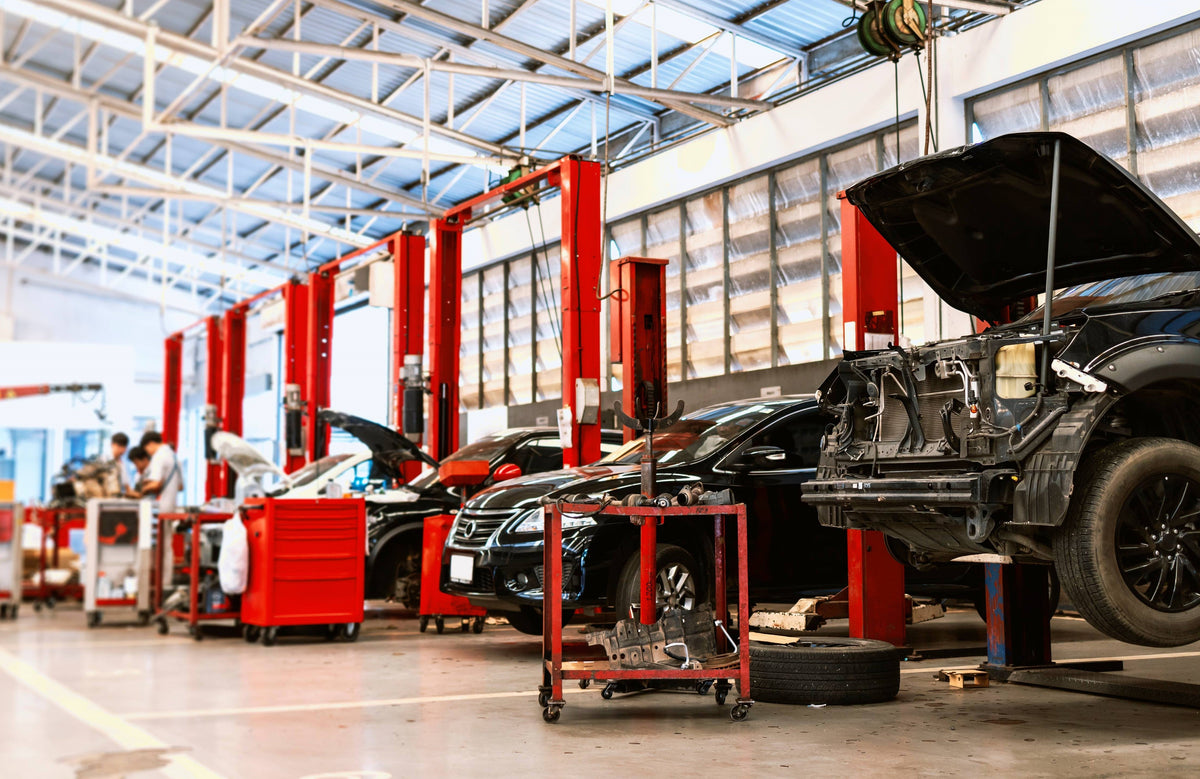
Boost Workshop Efficiency: 7 Proven Ways to Speed Up Repairs & Increase Profits
|
|
Time to read 4 min
|
|
Time to read 4 min
Introduction
Running an automotive workshop isn’t just about fixing cars—it’s about doing it faster, smarter, and more profitably.
Every wasted minute means lost revenue, delayed jobs, and frustrated customers.
But what if you could streamline your workflow, reduce downtime, and get more cars through the shop without overworking your team?
In this post, we’ll share 7 proven ways to improve efficiency in your workshop, from better organization to the latest diagnostic tools. Whether you’re a small garage or a high-volume shop, these tips will help you work faster, reduce mistakes, and boost your bottom line.
Table of Content
There is nothing worse than hunting for tools in disorganised workstations. Not only does it throw off your focus, but it also damages your efficiency.
Avoiding this is simple:
Designated equipment storage prevents wasted time searching for the right tools. You can also assign specific areas for frequently used tools.
Removing unnecessary items from workspaces can improve focus. Similarly, keeping frequently used equipment readily accessible can improve a technician's workflow.
The layout of a workshop matters!
Although it is something not many people consider, the way a workshop is designed can majorly affect efficiency.
For example, you can arrange workstations to reduce unnecessary movement. If a technician has to walk to either side of the workshop for parts or tools, this time can add up quickly.
Out of date equipment is killing efficiency in your workshop! Investing in high-quality scanners and testing equipment means faster processing, easier diagnostics and ultimately happier customers.
Regular training and upskilling goes so much further than just maximising efficiency. There are countless benefits, including:
Train mechanics regularly on new automotive technologies like EVs, hybrids, and ADAS.
Hands-on workshops improve speed, confidence, and accuracy, reducing errors and boosting customer satisfaction.
Encourage certifications to enhance credibility and grow the workshop’s reputation and profitability.
It's time to ditch the paperwork and make the switch to digital job tracking. Digital job management platforms boast features that reduce wasted time on manual record-keeping and improve the organisation/accessibility of job details.
Automate scheduling and invoicing.
Track work progress in real-time.
Enhance customer updates and service history tracking.
Nobody likes waiting for parts. Its bad for customers, technicians and advisors alike.
Over time, you can determine what parts get used up regularly, so you can always keep them in stock.
Keep essential parts in stock by tracking high-demand items and using an inventory management system with automatic reordering.
Build strong supplier relationships for reliable stock and better pricing. This reduces wait times, speeds up repairs, and improves customer satisfaction.
By creating a structured workflow, workshops can reduce wasted time, complete more jobs per day, and increase overall efficiency.
Implement clear, step-by-step repair processes.
Assign roles and responsibilities.
Use a job prioritisation system.
Minimise downtime between jobs.
Investing in high-quality, reliable tools can dramatically increase efficiency.
Having "the right tool for the job" is a well known expression in the mechanical community. Having the right (and better) tools will reduce repair times and technician fatigue.
It is also important to schedule regular maintenance of the workshop and all equipment. This includes hoists, compressors and servicing tools.
Failure to keep up with maintenance can result in equipment failure and costly repairs. Not to mention, the downtime required to fix the equipment could leave your workshop out of action for an extended period of time!
Investing in high-quality tools will save your workshop time and money. Furthermore, routine maintenance extend the life of your investments and minimise downtime for repairs.
Improving efficiency in an automotive workshop isn’t just about working harder—it’s about working smarter.
By implementing standardized procedures, optimizing workflow, and reducing downtime, you can speed up repairs, increase job capacity, and boost overall profitability. Investing in better tools, training, and technology will not only enhance productivity but also improve customer satisfaction and retention.
Even small adjustments - like organizing your workspace, streamlining communication, or keeping essential parts in stock - can have a huge impact on daily operations. A well-structured, highly efficient workshop keeps both your team and your customers happy - and that’s what drives long-term success.




